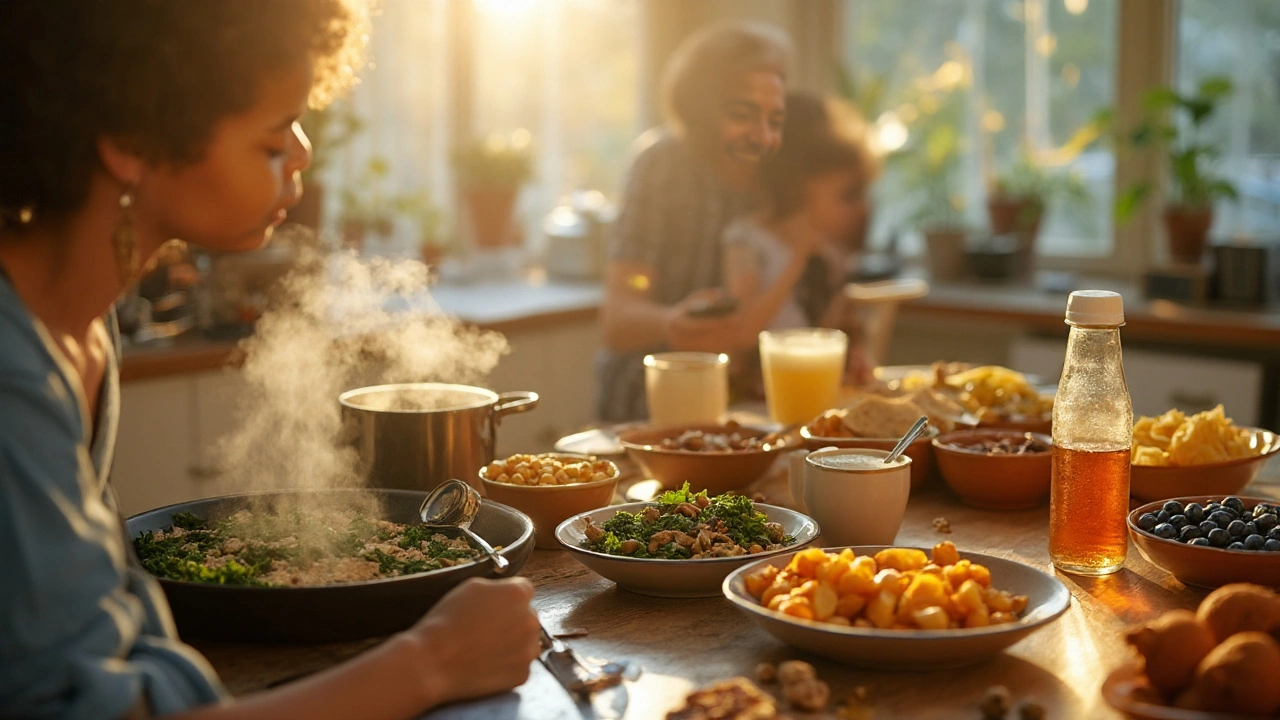Manganese‑Rich Foods: What to Eat for a Healthy Boost
Ever wonder why your body needs manganese? It helps turn food into energy, supports bone growth, and keeps your antioxidant defenses humming. Most people get enough if they eat a balanced diet, but knowing the top sources makes it easier to hit the sweet spot.
Top Natural Sources of Manganese
Here’s a quick list of foods that pack a manganese punch. The numbers are based on a typical serving size, so you can see how much you’d actually need.
- Whole grains – Brown rice, oats, and quinoa each supply around 1 mg per cup cooked. That’s roughly 45‑50% of the daily value.
- Nuts and seeds – A handful of pumpkin seeds or a quarter cup of walnuts gives about 0.8‑1 mg.
- Legumes – One cup of cooked lentils or chickpeas provides 0.5‑0.7 mg.
- Leafy greens – Spinach, kale, and Swiss chard deliver 0.3‑0.5 mg per cooked cup.
- Fruit – Pineapple, blueberries, and especially dried figs are good fruit sources, with roughly 0.2‑0.4 mg per serving.
- Spices – A pinch of cloves, cinnamon, or turmeric can add a surprising amount; a teaspoon of ground cloves contains about 0.3 mg.
Even a small amount of these foods can cover most of what you need. If you already enjoy whole‑grain toast or a handful of nuts, you’re probably getting plenty of manganese without thinking about it.
Tips to Add More Manganese to Your Meals
Want to boost your intake without overhauling your diet? Try these simple swaps.
- Swap white rice for brown rice or quinoa in stir‑fries. The extra texture also adds fiber.
- Top salads with pumpkin seeds, toasted walnuts, or a sprinkle of dried figs. It adds crunch and a sweet note.
- Blend a handful of spinach into smoothies. The flavor is mild, and you get a micronutrient boost.
- Use whole‑grain flour for pancakes or muffins instead of all‑purpose flour.
- Season soups with a dash of cinnamon or a few cloves. It works especially well in lentil or bean soups.
These tweaks are low‑effort but high‑impact. Because manganese works best when paired with other nutrients like vitamin C and B‑complex vitamins, mixing fruits, veggies, and whole grains gives you a well‑rounded nutritional profile.
If you’re pregnant, an athlete, or recovering from an injury, you might need a little extra. In those cases, talk to a health professional before adding supplements. Food first is usually the safest route.
Bottom line: a varied diet that includes whole grains, nuts, legumes, and leafy greens will keep your manganese levels in check. Keep an eye on portion sizes, and you’ll get the mineral’s benefits without any hassle.

